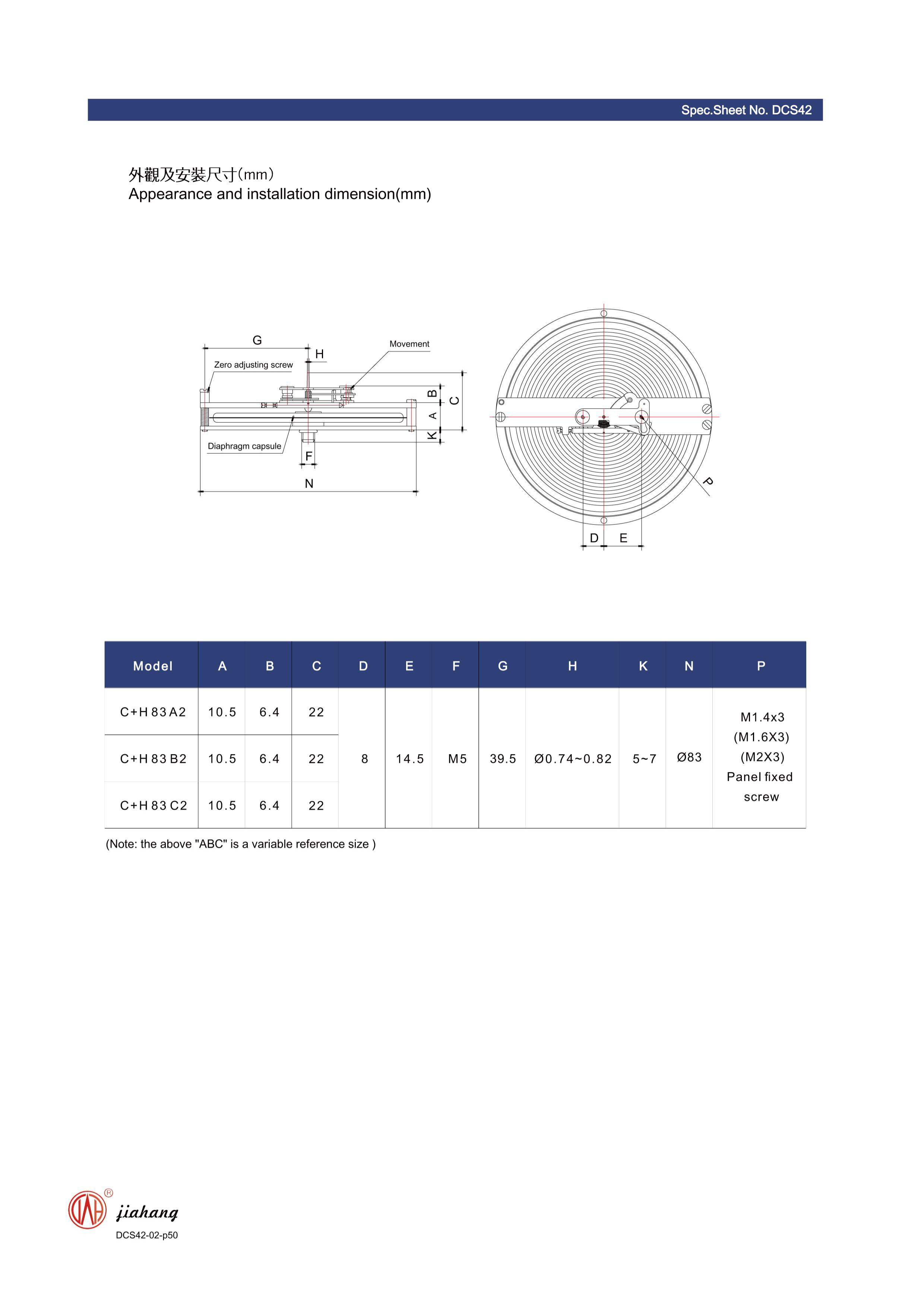
Oct . 11, 2024 02:18 Back to list
capacitance diaphragm pressure gauge service
Capacitance Diaphragm Pressure Gauge An Overview of Service and Applications
Capacitance diaphragm pressure gauges are essential instruments in various industries for measuring pressure. These devices utilize the principle of capacitance change caused by the deformation of a diaphragm under pressure. This article delves into the significance, functionality, and service aspects of capacitance diaphragm pressure gauges.
Operating Principle
The core of a capacitance diaphragm pressure gauge consists of a thin, flexible diaphragm positioned between a reference chamber and the pressure being measured. As external pressure acts on one side of the diaphragm, it flexes, causing a change in capacitance between the diaphragm and an electrode. This change is proportional to the pressure applied, enabling precise measurements. The capacitance is converted into an electrical signal and subsequently calibrated to provide a readable pressure output.
Advantages of Capacitance Diaphragm Pressure Gauges
1. High Accuracy and Sensitivity Capacitance diaphragm pressure gauges are known for their exceptional accuracy, often achieving precision within ±0.1% of the reading. This makes them suitable for applications requiring stringent tolerances.
2. Wide Pressure Range These gauges can measure a broad spectrum of pressures, from vacuum levels to extremely high pressures, making them versatile for various industries.
3. Stability The absence of moving parts contributes to the durability and stability of these gauges over time, leading to long service life and reduced maintenance needs.
4. Temperature Compensation Many modern capacitance diaphragm pressure gauges feature built-in temperature compensation, ensuring consistent performance across varying environmental conditions.
Service Considerations
While capacitance diaphragm pressure gauges are robust, they still require periodic maintenance and service for optimal performance. Key service considerations include
1. Calibration Regular calibration is essential to ensure accuracy. Depending on the application, gauges may need calibration as frequently as every six months or annually. Calibration should be conducted using certified standards to assure correctness.
capacitance diaphragm pressure gauge service

2. Environmental Conditions These gauges are sensitive to environmental factors such as temperature, humidity, and contamination. Maintaining the gauge in clean, controlled environments can prolong its lifespan and maintain precision.
3. Inspection for Damage Regularly inspecting the diaphragm and housing for signs of wear, cracks, or contamination is crucial. Any physical damage may compromise the accuracy and safety of the gauge.
4. Electrical Connections Ensuring that electrical connections are secure and free from corrosion is vital. Loose or corroded connections may lead to erratic readings or failures.
Applications
Capacitance diaphragm pressure gauges are widely used across numerous sectors
- Chemical Industry They are ideal for monitoring pressures in reactors, storage tanks, and pipelines, ensuring operational safety and efficiency.
- Pharmaceuticals Accuracy is critical in drug manufacturing, and these gauges help maintain the integrity of processes involving sterile environments.
- Food and Beverage Maintaining consistent pressure in processing equipment is vital for quality control, making capacitance diaphragm gauges invaluable in food production.
- Oil and Gas These gauges can withstand high-pressure environments, providing essential data for drilling and extraction processes.
Conclusion
Capacitance diaphragm pressure gauges serve a pivotal role in maintaining operational efficiency and safety across various industries. Their accuracy, durability, and adaptability make them the preferred choice for many applications requiring precise pressure measurement. By understanding their operating principles, benefits, service needs, and applications, businesses can leverage these instruments to optimize their processes and ensure compliance with industry standards. Regular maintenance and calibration will ensure these gauges continue to perform at their best, providing reliable data for critical decision-making.
-
High-Precision 5 Valve Manifold Differential Pressure Gauge Suppliers
NewsApr.29,2025
-
High-Precision Diaphragm Vacuum Pressure Gauges Manufacturers & Quotes
NewsApr.29,2025
-
Omega Differential Pressure Gauges High Accuracy & Durability
NewsApr.28,2025
-
Low Pressure Differential Pressure Gauges Precision Solutions & Quotes
NewsApr.28,2025
-
Digital Diaphragm Pressure Gaauge Precision Measurement & OEM Quotes
NewsApr.28,2025
-
Differential Pressure Gauge China Price High-Accuracy & Best Quotes
NewsApr.28,2025
